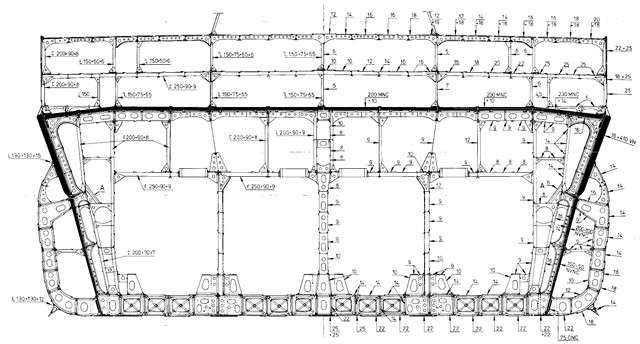Thanks guys for the suggestions,
Yes, I belive metal would be the way to go here. I did git some sheet styrene of varying thicknesses to simulate but the metal would be easier to work with I should think
BD,
I remember Paine's book. I read it as a kid and totally forgot about it. I tried to duplicate his work many times as a lad.
Groot,
The motor tool has come up a few times. Looking at my old model, I do believe I will need to do that. The wire strand idea for piping is pure genius. I was going use strip styrene, but why? The Yamato's and Musashi's torpedo belt were constructed as such the there was an opening inside the bulge (see pic below of the mis section) I read on the Modelships.com forum that the two ships had the armor palting attacked to 1' thick sides. I would think, assuming a torpedo would make it through the around 16" of armor, it would explode inside the bulge so there would be damage outward on the belt and damage inward on the inner hull. I think I'm rambling hare and forgetting which thread I'm on.
KT,
Ahh, an aluminum can, great idea. You see, this is why I asked the question.

Steve